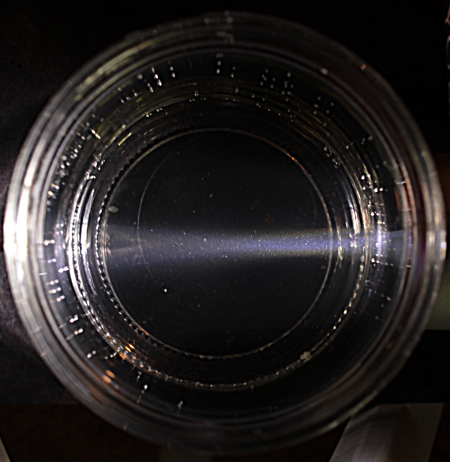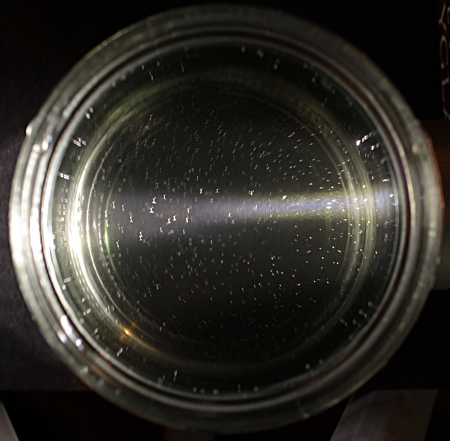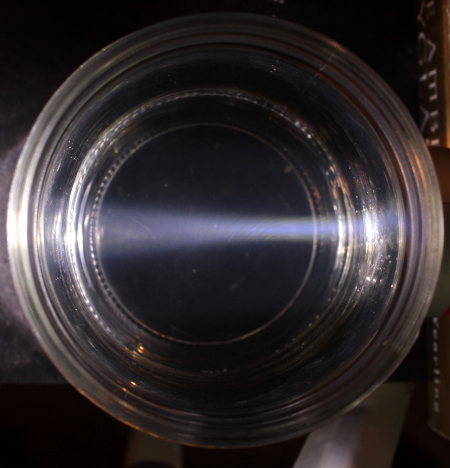It is now April 11, 2014. Filter 10a, 10b, and 10c have been running steadily for about 6 weeks. Filter 10a uses .25 mm effective size sand, filter 10b uses .15 mm effective size sand, and filter 10c uses .20 mm effective size sand. These filters were inoperative for half of November, and all of December last year (2013); and all of January, and 3 weeks in February of this year because of below freezing temperatures. A water clarity test has been done on all three filters and the results are shown below. The flow rate of these filters is very slow; about like a dripping faucet. This is the compromise necessary to make these filters work. They are totally different than commercial “on demand” filters that let water flow freely from the kitchen faucet.This is very important to know. If one of these filters is put together with the expectation that water will just come flowing out like it does from a typical household faucet; the result will be disappointment for sure.
It looks like filter 10b is doing very well at removing physical contamination. A biological test will be done asap. All of the above images were created using an led, focused light source powered by two fully charged NiMH cells rated at 2400 milliamp hours. All of the containers are of the same type. All of the other images on this blog, with the exception of those using the red laser, use the same led light source with fully charged batteries so as to maintain consistent light brilliance for comparison purposes.
Below are some water samples: three from our deep well: water from that well filtered by a sand filter, and water from that well filtered by a commercial filter that attaches to the faucet, and unfiltered water straight from the well storage tank; and following that, a bottled water sample.

– This is filtered well water from our deep well, after it has been through a “micro” slow sand filter that sits on the counter (more on that “micro” slow sand filter shortly.)

This is the same deep well water that has been filtered by a commercial filter that attaches to the faucet.










